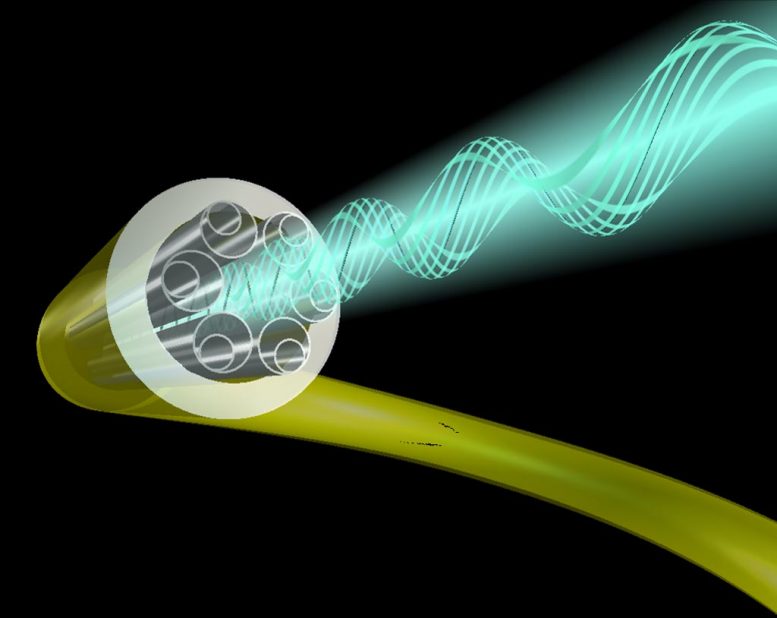
The latest generation of hollow-core Nested Antiresonant Nodeless Fibers has been pioneered in Southampton. Credit: University of Southampton
Researchers from the University of Southampton and Université Laval, Canada, have successfully measured for the first time back-reflection in cutting-edge hollow-core fibers that is around 10,000 times lower than conventional optical fibers.
This discovery, published this week in The Optical Society’s flagship Optica journal, highlights yet another optical property in which hollow-core fibers are capable of outperforming standard optical fibers.
Research into improved optical fibers is key to enable progress in numerous photonic applications. Most notably, these would improve Internet performance that heavily relies on optical fibers for data transmission where current technology is starting to reach its limits.
A small portion of the light that is launched into an optical fiber is reflected backwards as it propagates, in a process known as backscattering. This backscattering is often highly undesirable as it causes attenuation of signals propagating down the optical fiber and limits the performance of many fiber-based devices, such as fiber optic gyroscopes that navigate airliners, submarines, and spacecraft.
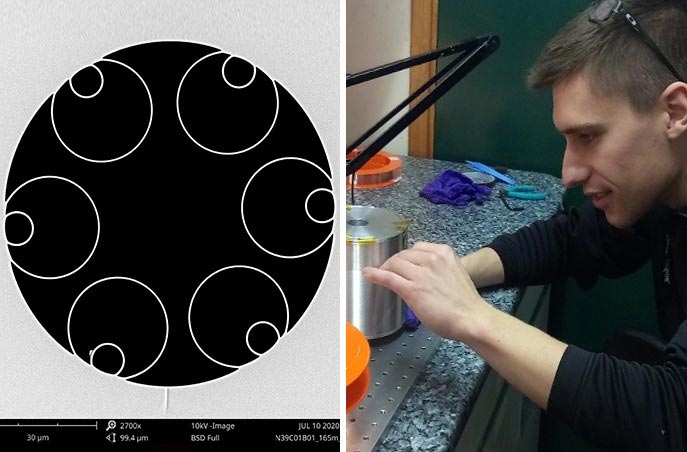
Left: Light propagates through a central hole of the hollow-core fiber. Right: Lead author Vincent Michaud-Belleau from COPL, Université Laval. Credit: University of Southampton + Université Laval
However, the ability to reliably and accurately measure backscattering can be beneficial in other instances, such as the characterization of installed fiber cables where the backscatter is used to monitor the condition of a cable and identify the location of any breaks along its length.
The latest generation of hollow-core Nested Antiresonant Nodeless Fibres (NANFs), which have been pioneered in the Southampton-led LightPipe research program and applied to novel application fields within the Airguide Photonics program, exhibit backscattering that is so low that up until this point it remained unmeasurable.
To resolve this challenge, Optoelectronics Research Centre (ORC) researchers at the University of Southampton teamed up with colleagues from the Centre for Optics, Photonics and Lasers (COPL) at Université Laval, Québec, who specialize in research into highly-sensitive optical instrumentation.
They developed an instrument that enabled the team to reliably measure the extremely weak signals back-scattered in the latest ORC-fabricated hollow-core fibers – confirming that scattering is over four orders of magnitude lower than in standard fibers, in line with theoretical expectations.
Professor Radan Slavik, Head of the ORC’s Coherent Optical Signals Group, says: “I am very fortunate to work in the ORC, where the long-term, world-leading research of my design and fabrication colleagues has led to the lowest-loss and longest-length hollow-core fibers ever made. My work has focussed on measuring the unique properties of these fibers, which is often challenging and requires collaborations with world-leading groups in measurement, such as the UK’s National Physical Laboratory and in instrumentation, such as Université Laval.”
Dr. Eric Numkam Fokoua, who carried out the theoretical analysis at the ORC to support these findings, says: “The experimental confirmation of our theoretical prediction that backscattering is 10,000 times less in our latest hollow-core fibers than in standard all-glass fibers demonstrates their superiority for many fiber optic applications.
“Moreover, the ability to measure such low backscattered signal levels is also critical in the development of hollow-core fiber technology itself, in providing a critical route to distributed fault-finding in fabricated hollow-core fibers and cables as needed to drive forward improvements in their manufacturing processes. Existing technology is simply not sensitive enough to work with these radical new fibers and this work demonstrates a solution to this problem.”
Reference: “Backscattering in antiresonant hollow-core fibers: over 40 dB lower than in standard optical fibers” by V. Michaud-Belleau, E. Numkam Fokoua, T. D. Bradley, J. R. Hayes, Y. Chen, F. Poletti, D. J. Richardson, J. Genest and R. Slavík, 10 February 2021, Optica.
DOI: 10.1364/OPTICA.403087

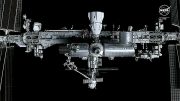



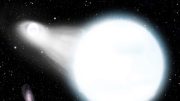

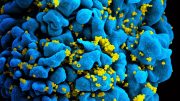
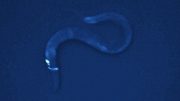
looks at polymer fiber optic cables to combine all data/coax audio cable tv/power cord into one single unified cable to get rid of all unnecessary wires on electric devices.